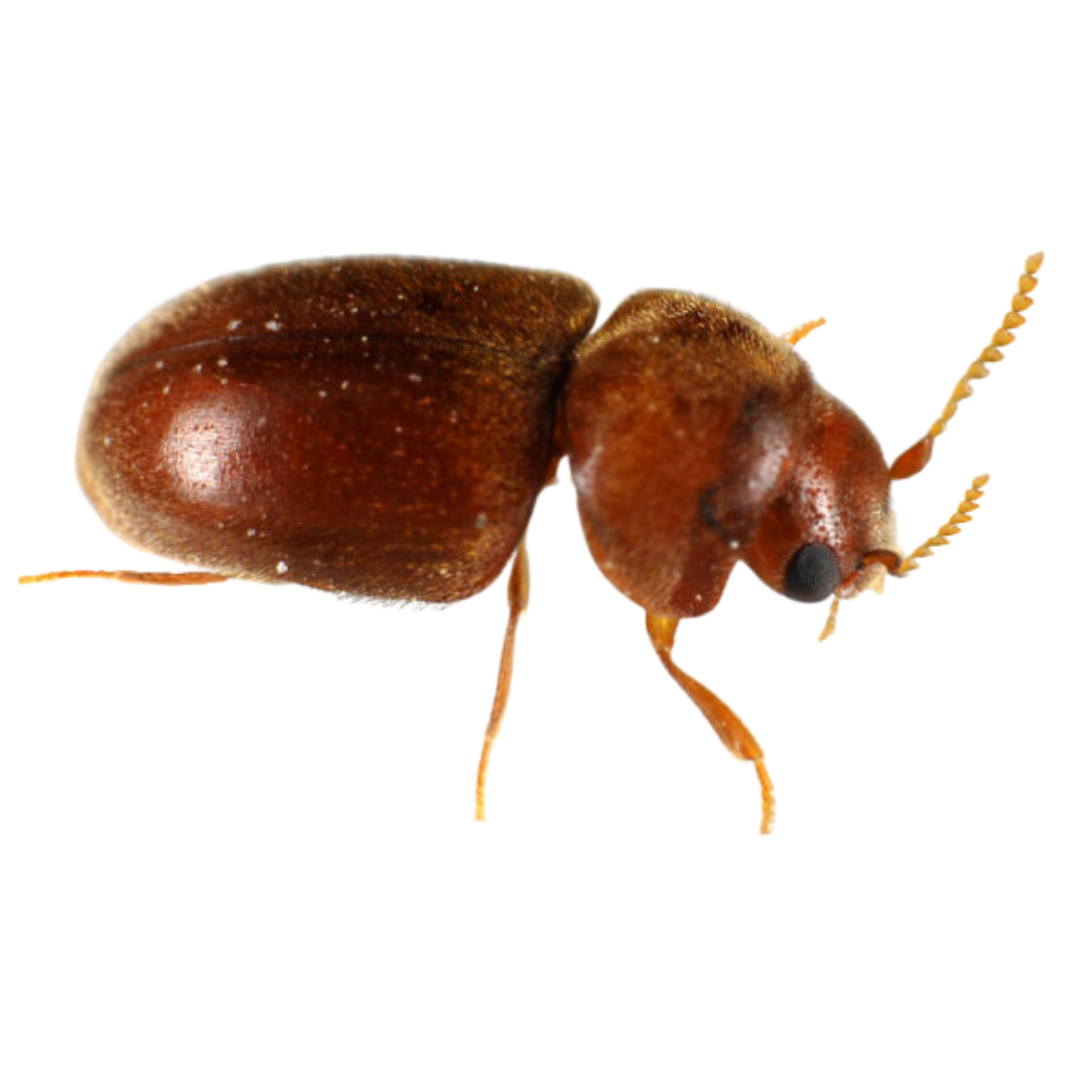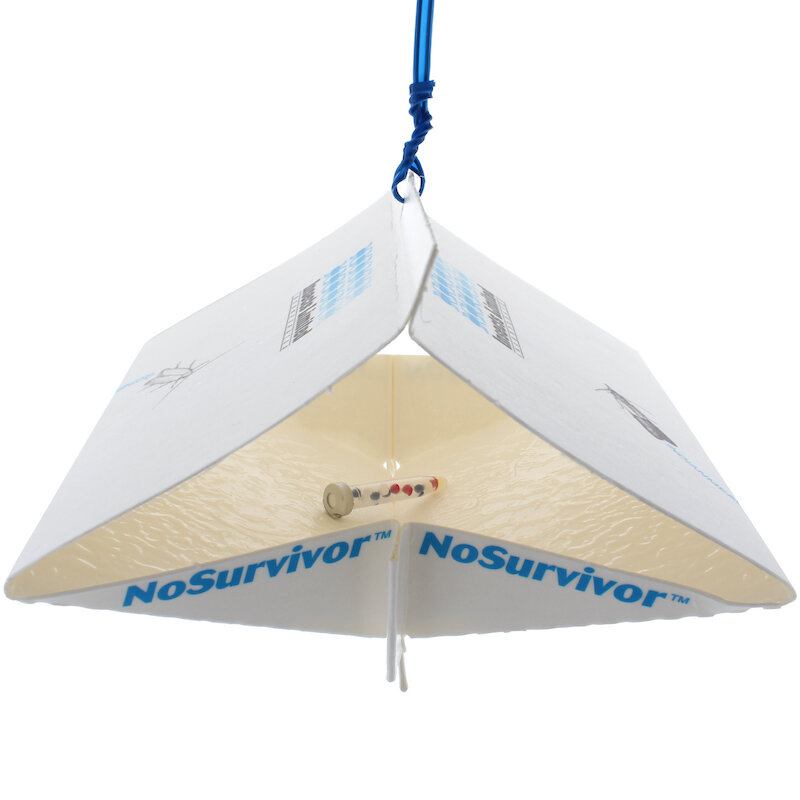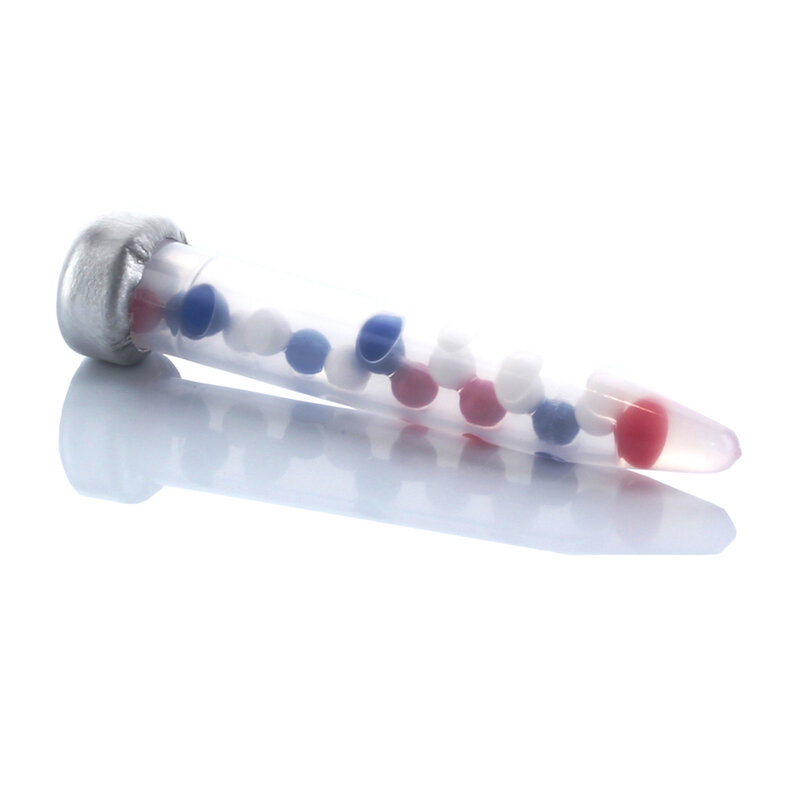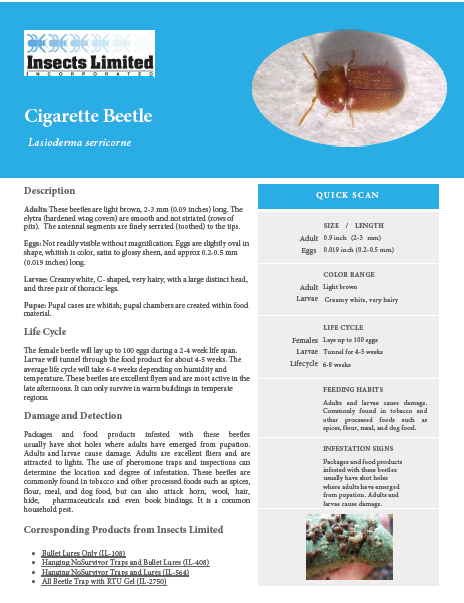Cigarette Beetle (Lasioderma serricorne)





Pheromones and Traps for Cigarette Beetle
Cigarette Beetle Description
Cigarette Beetle Adults: These beetles are light brown, 2-3 mm (0.09 inches) long. The elytra (hardened wing covers) are smooth and not striated (rows of pits). The antennal segments are finely serrated (toothed) to the tips.
Cigarette Beetle Eggs: Not readily visible without magnification. Eggs are slightly oval in shape, whitish in color, satin to glossy sheen, and approx 0.2-0.5 mm (0.019 inches) long.
Cigarette Beetle Larvae: Creamy white, C- shaped, very hairy, with a large distinct head, and three pairs of thoracic legs.
Cigarette Beetle Pupae: Pupal cases are whitish; pupal chambers are created within food material.
Cigarette Beetle Life Cycle
The female cigarette beetle will lay up to 100 eggs during a 2-4-week life span. Larvae will tunnel through the food product for about 4-5 weeks. The average life cycle will take 6-8 weeks depending on humidity and temperature. Cigarette beetles are excellent flyers and are most active in the late afternoons. It can only survive in warm buildings in temperate regions.
Cigarette Beetle Damage & Detection
Packages and food products infested with cigarette beetles usually have shot holes where adults have emerged from pupation. Adults and larvae cause damage. Adults are excellent fliers and are attracted to lights. The use of cigarette beetle pheromone traps and inspections can determine the location and degree of infestation.
Cigarette beetles are commonly found in tobacco and other processed foods such as spices, flour, meal, and dog food, but can also attack horn, wool, hair, hide, pharmaceuticals and even book bindings. It is a common household pest.
Cigarette Beetle Facts
If a cigarette or cigar gives a slight “pop” after being lit, it is likely a cigarette beetle larva within that has been superheated by the ash to the point where it explodes.
Similar species include drugstore beetles (Stegobium paniceum) and common furniture beetle (Anobium punctatum).
Other common names include cascarudo cigarrero, cigar beetle, tobacco beetle, tow bug, small tobacco beetle, and stored snuff beetle.
Cigarette beetles carry a symbiotic yeast that assists in digestion of less nutritious foods and can provide resistance to certain toxins.
Cigarette beetles initiate flight at temperatures above 20°C (68°F).
Cigarette Beetle Monitoring Tips & Tricks
Cigarette Beetle Monitoring Guidelines
Lures
BULLET LURES for cigarette beetles contains the sex pheromone to attract male beetles.
PANTRY PATROL Pheromone /oil dispenser. Contains grain-based food attractants to attract males and female as well as the sex pheromone to attract male Cigarette beetle.
ALL BEETLE TRAP READY-TO-USE TRAY is a preloaded accessory of the ALL BEETLE TRAP that contains either the PANTRY PATROL Pheromone/oil dispenser or the STORED PRODUCT BEETLE (SPB) LURE and glueboard.
Lure Storage
Keep unopened lures in cool storage less than 16°C (60°F) or place in freezer for extended storage. Lures can remain frozen for up to 24 months or at room temperature for 12 months to retain their full effectiveness for use afterwards.
Trap Designs Used with Lure
NOSURVIVOR TRAPS are diamond shaped sticky traps designed to be hung.
ALL BEETLE TRAP consists of three parts: A clear lid, blue base, and snap in tray. This device can be paired with many different types of attractants available by Insects Limited depending on the insect you are monitoring.
PANTRY PATROL “CORNER” pitfall traps contain a triangular pit to receive a full dispenser of pheromone /oil. Dust cover is incorporated into cardboard packaging.
Cigarette Beetle Traps and Treatment
Cigarette Beetle Trap Placement & Use
Trap Placement Techniques
Pheromone traps can be placed year-round but are especially recommended when temperatures exceed 12.5°C (55°F). Floor pheromone traps like the All Beetle Trap and Flat Trap are more effective at capturing Cigarette beetles compared to hanging pheromone traps, however, hanging pheromone traps tend to stay clean longer and allow for easier inspection.
Place hanging pheromone traps 1.5 m (5 feet) above ground or at eye level to allow for easy inspection when monitoring traps. In areas such as a pantry or home, place one or two pheromone traps per room. In commercial areas such as warehouses or retail stores, place pheromone traps 7.5–15 m (25–50 feet) apart to determine the presence or absence of Cigarette beetles. Increase pheromone trap density to 4.5–7.5 m (15–25 feet) apart to help locate the source of Cigarette beetles.
Keep pheromone traps 7.5 m (25 feet) away from exterior doors. Cigarette beetle pheromone traps are best utilized in areas that store dried goods such as food, grains, seeds, tobacco, spices, hay, dried fruit, nuts, animal feed, or pet food.
Trap and Lure Maintenance
Replace traps when glue is filled with insects or becomes dusty.Replace pheromone lures every 90 days. Replace all pheromone lures in a location at the same time. Do not cut the cap off the bullet lure. Do not stagger lure replacement over several weeks. Record date and number of catches to identify trending information.
Cigarette Beetle FAQs
How to get rid of cigarette beetles?
The use of pheromone traps for cigarette beetles can indicate their presence as well as where the beetles are coming from. A visual inspection of dried food or spices in the vicinity of the pheromone traps containing the most beetles can reveal specific items containing larvae, pupae and adult beetles.
Once a cigarette beetle infestation is found, the infested materials should be sealed up and discarded or treated to kill the cigarette beetles. Treatment options for cigarette beetles includes freezing for 1 week, such as with these insect freezer treatment bags, or having a certified pest management specialist perform an anoxic treatment or a gas fumigation on the infested materials.
What do cigarette beetles eat?
Cigarette beetles, Lasioderma serricorne are also called tobacco beetles in many parts of the world. They are one of the few insects that can thrive on dried tobacco. Most insects died after consuming tobacco because the nicotine in tobacco can also be considered a pesticide. Cigarette beetles share their gut with micro organisms (symbiotic yeasts) that break down the nicotine in tobacco.
This allows the beetles to take the nutritional benefits of the leaf without dying from the nicotine. Cigarette beetles can eat a very wide range of materials beyond tobacco though. They are commonly found in spices, dried pet foods, decorative plants and seeds, and in many types of dried food goods.
What is the life cycle of cigarette beetles?
The female beetle will lay up to 100 eggs during a 2-4-week life span. Larvae will tunnel through the food product for about 4-5 weeks. The average life cycle will take 6-8 weeks depending on humidity and temperature. These beetles are excellent flyers and are most active in the late afternoons. It can only survive in warm buildings in temperate regions.
Cigarette Beetle Traps
Join Our Informed Community
Receive the latest industry updates as soon as they are published.






